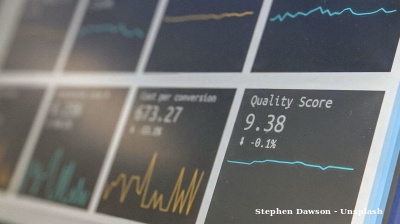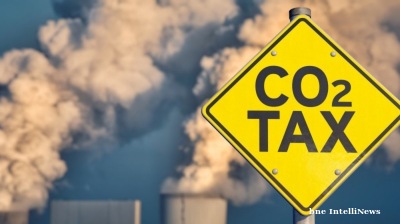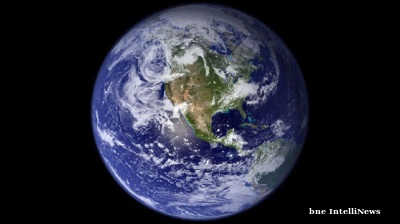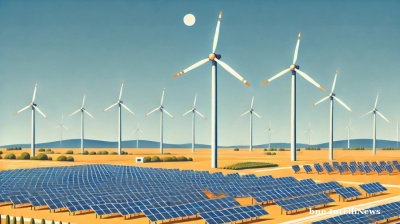There’s an old saw amongst macroeconomists covering Europe: if Germany catches cold, the rest of the continent sneezes. But that is no longer true. The German economy has been hospitalised and all Poland is expected to suffer from is a case of the snuffles.
Over the last two decades Poland has boomed. Where it used to rely on money sent home by the famous “Polish plumber” odd-jobbing in other EU countries, these days many of those itinerant workers have returned home as the job opportunities and pay have improved.
Germany dominates the EU economy, thanks to its sheer size and decades of export-driven current account surpluses. But it has been hit by a series of shocks that have undermined the Wirtschaftswunder.
Meanwhile, Poland’s rapid expansion and the fifth-largest population in Europe make it increasingly resilient to external shocks. Poland might have fallen behind after decades of underinvestment but thanks to EU structural adjustment funds worth about €10bn a year and flourishing domestic consumption the economy has come on by leaps and bounds.
In 2008, Poland it was one of only two countries in the world to avoid recession during the great financial crisis of that year.
Germany has just entered its third year of recession, having contracted by 0.2% in 2024. By contrast, Poland’s economy expanded by 2.9% last year, buoyed by steady domestic consumption and private investment gathering momentum.
Household consumption drove the headline figure, growing 3.1%, a major increase after a fall of -0.3% in 2023. Investment might have eased growth to just 1.3% - after a jump of 12.6% in 2023 but that was the result the transition between the EU’s two budget perspectives.
The outlook for 2025 is even better, as growth is expected at 3.5%, according to the latest forecast by the International Monetary Fund (IMF). Most predictions from other key institutions also put Polish growth clearly above the 3% line.
“This is more than three times faster than the Eurozone, much faster than the average for developed economies and the European Union, more dynamic than emerging economies in Europe, and above the average growth for the entire world economy,” Finance Minister Andrzej Domanski boasted on X in January. The minister also said that the government’s internal analyses show growth is set to reach 3.9% in 2025.
“We expect a 3.2% increase in GDP in 2025, as a continued expansion in consumption should be accompanied by a rebound in fixed investment. With external demand weak and the German economy struggling to recover, we foresee a negative contribution from net exports. Poland should still remain the growth leader in the CEE region,” ING said in a recent note.
As the data show, Poland’s GDP growth has been consistently higher than both Germany’s and the EU average since it joined the EU in 2004. Moreover, while Poland’s nominal GDP was less than a tenth the size of that of Germany’s in 2004, by 2024 it had significantly closed the gap and was about a fifth of the size. And indexing the value of the economy against the 2004 value, set to 100, the Polish economy has more than tripled in size in comparison to the year of its accession.
If this year’s forecasts turn out to be correct, Poland will mark an ever-greater disconnection from the cyclicality of the Germany economy thanks to its powerful internal market and efforts to gain in other export markets.
Germany is shrinking
“Now it’s official. The German economy ended 2024 in contraction, shrinking by -0.2% quarter-on-quarter. On the year, the economy also contracted by 0.2%. Fun fact: this was the third year in a row that the German economy ended the year with a negative quarter,” ING said in a note summing up yet another disastrous year for Germany.
“Ten years of underinvesting, deteriorating competitiveness and China’s shift from an export destination to a fierce industrial competitor have taken – and will continue to take – their toll on the German economy,” ING also said.
Germany's three most pressing structural economic issues are: energy, the changing role of China, and deteriorated competitiveness due to a decade of underinvestment.
The closure of Germany’s nuclear power stations on the decades' long insistence of the Greens - their view of nuclear power eventually spreading to mainstream - coupled with the energy shock driven by Russia's invasion of Ukraine in 2022, has led to the biggest collapse in German living standards since World War 2 and a downturn in economic output comparable to the 2008 financial crisis.
The downturn is having political implications, too. The funding of the war in Ukraine – Germany has been Ukraine’s most generous EU backer – has put a strain on Germany’s finances that was already in a budget crisis after budget spending bumped up against borrowing limits imposed by the constitution by the so-called Schuldenbremse, or “debt brake” that limits government borrowing.
To bounce back, analysts estimate that Germany needs to invest up to 1.5% of GDP a year for the next decade. That will mean relaxing the Schuldenbremse and running loose fiscal policies for the next government. The restrictions are enshrined in the constitution making those changes will be very hard.
At the end of last year, German Chancellor Olaf Scholz announced that Berlin had run out of money for Ukraine and will drastically reduce its contributions after this year. Tensions over money and wrangling over a €3bn aid package for Ukraine has led to the collapse of the ruling coalition and German policy is in limbo as the country waits for a new government in a general election slated for February.
While the election campaigning started with a laser focus on the economy, in January it was becoming increasingly sidetracked by immigration issues, as the centre parties attempt to try and steal some of thunder of the the far-right AfD (Alternative für Deutschland) that has been gaining in the polls.
On January 29 the German Bundestag voted for a non-binding plan by CDU leader Friedrich Merz for tougher migration measures that was an AfD agenda list-lite. A bill that would have made some of those measures legally binding eventually fell through, however.
The failed Russian gas bet
As recently as 2019, Germany enjoyed some of the lowest electricity prices in the European Union. Its fleet of seven state-of-the-art nuclear power stations combined with copious imports of cheap Russian piped gas meant German an energy hub for all of Europe.
By 2023, the nuclear power plants had been mothballed and the Russian gas pipelines blown up. Energy prices have tripled, making German energy costs twice those in France and China and three times higher than in the United States. Germany has gone from being a net exporter of power to an impoverished net importer that embarrassingly remains dependent on backdoor imports of Russian gas to power its economy.
Deindustrialising German problems date to well before the war in Ukraine started, but the spike in the costs of energy made them worse. In a widely reported story, Volkswagen has been forced to close three plants in its home market for the first time in its nine decade-long history.
And these are not cyclical problems. The hike in energy prices is a permanent change. Five years after the onset of the Covid-19 pandemic, German industrial production remains about 10% below its pre-pandemic levels. Manufacturing capacity utilisation is at lows comparable only to those seen during the financial crisis and the initial lockdowns, according to ING.
“The German economy has now been stuck between cyclical and structural headwinds for several years, and 2024 was finally the year that many politicians realised that the old macro business model of cheap energy and easily accessible large export markets was no longer working,” ING said.
Some 10% of its heavy industry has closed down as it is no longer economically viable. A third of these companies have left the country. Another third are planning to go, according to German business association surveys.
Germany’s issues extend beyond energy. The shift in global trade patterns has left its export-focused industries vulnerable. China, once a vital market for German goods, has become a formidable competitor. Since launching its "Made in China 2025" strategy, Beijing has aggressively advanced in sectors where Germany once dominated, including automotive and high-tech industries. Fading exports is part of the reason the economy performed so badly in 2024.
“GDP details will only be released next month but available monthly data as well as the statistical office’s press release suggest that exports dragged the economy into contraction,” said ING.
For example, solar panels were invented and originally produced in Germany in the noughties. Germany companies like companies like Q-Cells and SolarWorld were leaders in global production. But after massive investment, it has been outpaced and outclassed by China and the industry has collapsed in the last years.
Solar panel production is a cautionary tale of everything that is wrong with the German economy. The government gradually reduced feed-in tariffs and subsidies, making it harder for domestic companies to sustain operations. At the same time higher labour and energy costs made production increasingly uncompetitive as the unit cost fell thanks to innovation and growing economies of scale. By 2023 things were so bad that the government toyed with the idea of reintroducing subsidies to bail the sector out, but in the end balked at the cost and simply let the business go.
Q-Cells went bust in April 2012 before being taken over by South Korea’s Hanwha Group. And SolarWorld, formerly Germany’s biggest manufacturer of solar panels also went bust in May 2017.
The changes in the global economy and the German slowdown has exposed weaknesses in Germany’s industrial strategy, as years of complacency and underinvestment in infrastructure, education, and digital systems have eroded its global standing. Once a top-five contender in global competitiveness rankings, Germany now languishes in the low twenties.
Of course, these are not exclusively German problems. The now-famous report from former Italian Prime Minister and ex-European Central Bank boss Mario Draghi bleakly concluded that Europe has lost its competitive edge and is now rapidly falling behind both the US and China.
The US has left Europe in the dust over the last three decades in terms of GDP growth (much as the measure's drawbacks are well known). In 1991, the EU had a collective GDP of approximately $6.73 trillion, while the United States' GDP was trailing at around $5.99 trillion. By 2024, the economic landscape flipped, with the EU's GDP estimated at $19.40 trillion but the US had slide by and was worth approximately $29 trillion.
The US economy grew significantly faster than the EU's, with a 384.2% increase compared to 188.3% for the EU in the period. In absolute terms, the US economy added $23.01 trillion in GDP, while the EU added $12.67 trillion over 33 years.
Polish tiger
Germany has long been the most significant consumer market in Europe and as the Exportweltmeister, decades of positive current account surpluses also made it by far the richest. But that is starting to change as the Polish market, the second largest in Europe, is starting to close the gap.
Germany is still top dog, due to its size. It has a population of 84.3mn, twice that of Poland’s 38mn. Consumer spending in Germany topped €2 trillion in 2023 about quadruple that of Poland's consumer spending of approximately $464.25bn the same year and double Poland’s in per capita terms.
But Polish consumption has almost tripled over the last 20 years since it joined the EU and continues to grow much more strongly than Germany’s.
That makes Poland increasingly less reliant on German demand than neighbours such as Hungary or the Czech Republic, as it relies more and more on its own internal market for growth. Germany’s contraction is still going to weigh on Polish exports, but that will hurt its smaller neighbours more than it will Warsaw.
Poland has its own problems in the short-term as the health of the German economy still makes a difference; contrary to the government’s triumphalism, some analysts see Poland’s growth struggling to exceed 3% in 2025, impeded by a slowdown in exports across the Oder.
Still, Poland’s domestic resilience keeps growing, bolstered by strong private consumption and investment under the National Recovery Plan (KPO) – the Polish programme to implement the EU’s post-pandemic recovery strategy – which has allowed it to maintain its position as the CEE region’s growth leader.
In 2025, investment is expected to accelerate, further insulating the economy from external shocks, and the economy remains vibrant just as the economic and political miasma over Germany deepens.
Unsurprisingly, Poland’s export sector faces its own pressures, partly tied to rising labour costs. Average wages in Poland have reached levels comparable to Portugal and Greece, diminishing its cost advantage in international markets. But that has been offset by remarkable productivity gains in the last 20 years. Between 2010 and 2019, Poland's labour productivity increased three times faster than the OECD average.
How long the road ahead is for more productivity gains is not clear and Poland is increasingly finding itself competing with Southeast Europe, which is now also enjoying the same fast “catch-up” growth Poland had after 2004. The Balkans are booming as they too reach critical mass in the productivity/labour cost equation that fuelled much of Poland’s fast growth. In particular, Romania has emerged as a strong regional competitor, offering lower production costs and increasingly sophisticated industries.
Polish gran-dads v Russia
And Poland still has some very difficult structural problems to overcome. Like in Germany, energy could pose problems for the Polish economy. A draft of the long-awaited and very ambitious National Energy and Climate Plan for 2030-2040 was released in November but a question mark still hangs over the government’s commitment to carrying it out and at what pace it will go.
The issue is not that a geopolitical gamble on Russian gas backfired but rather the glacial pace of energy transformation. Two-third of Poland’s electricity is still generated by hard coal and lignite, while the development of wind power has stalled and nuclear power still a decade and a half away.
Despite these challenges, Poland has seen some success in diversifying its export markets, with notable progress in sales countries such as France, the UK, and Spain.
But it’s not just exports that are going to decide Poland’s economy’s progress in 2025 and beyond. Poland’s strong domestic demand offers a striking contrast to Germany’s waning consumer spending. While German households face the combined pressure of inflation and declining purchasing power, Polish consumers continue to drive growth.
Private consumption in Poland is expected to maintain its momentum in 2025, supported by rising incomes – as inflation is expected to ease towards the central bank’s target of 2.5% this year – and ongoing investment activity. The construction sector, which showed signs of recovery in late 2024, adds to this positive outlook, waiting in the starting blocks for the KPO money tap to fully open.
For Poland, the German downturn underscores the need for a more balanced approach to growth - which Poland has actually achieved, diminishing its reliance on Germany. The country’s long-term prospects are now going to hinge on its ability to maintain competitiveness and expand its global footprint, particularly in light of its rising costs and shifting trade dynamics.
If there is anything that truly is a danger to Poland’s prospects, it is two things. Domestically, Poland is getting old and while this is not a big issue here and now, the years ahead plain a bleak picture of country nearly at Europe’s bottom in terms of birth rates. Economists’ trying to warm up the public to the idea of more immigrant labour - on top of an estimated 2.5mn-2.8mn already in - is meeting political backlash from the far-right (and from the centre, too, as it is trying to cozy up to the extremists, fishing for votes ahead of the presidential election this May and June).
On the foreign front, Poland has long warned that Russia could zero in on it once - and if - it achieves success in Ukraine. Polish political and military elites warn that the risk of an all-out Russia-Nato war is growing by the year. That view is supported by Nato commanders in Western Europe too. For now, however it is party time for the EU’s most dynamic economy.
Features

BEYOND THE BOSPORUS: Investigators feel collar of former Turkish central bank deputy governor
Regime gangs continue to hustle for gains. Some Erdoganist businessmen among the losers.

Journalist beaten to death in Istanbul as security conditions in Turkey rapidly deteriorate
Publisher, meanwhile, is shot in leg. Reporters regularly experience violence, judicial harassment and media lynching.

Agentic AI becomes South Korea’s next big tech battleground
As countries race to define their roles in the AI era, South Korea's tech giants are now embracing “agentic AI”, a next-generation form of AI that acts autonomously to complete goals, not just respond to commands.

Iran's capital Tehran showcases new "Virgin Mary" Metro station
Tehran's new Maryam metro station honours Virgin Mary with architecture blending Armenian and Iranian design elements in new push by Islamic Republic




